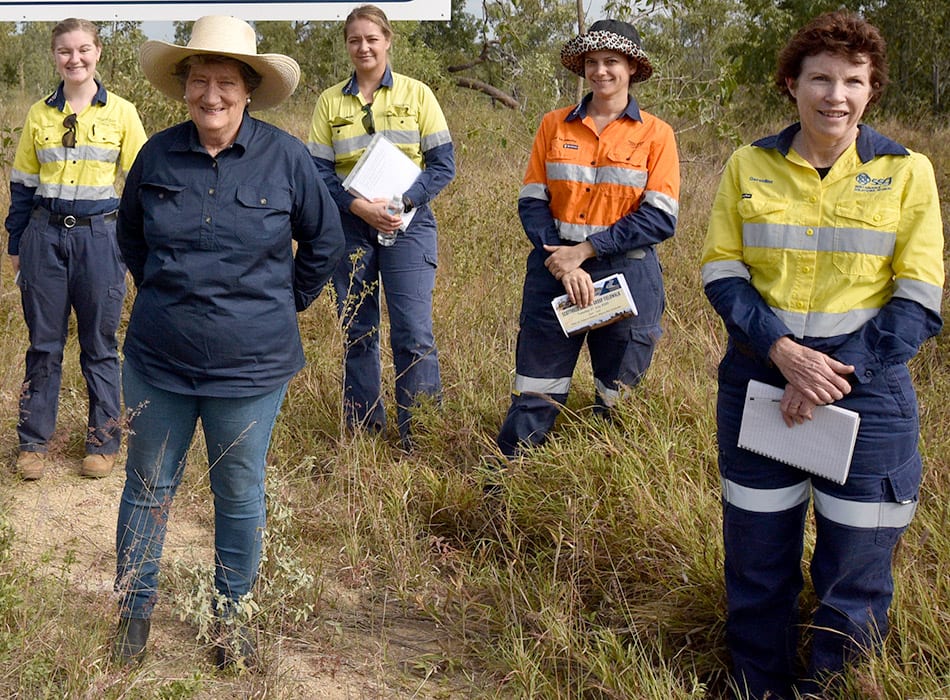
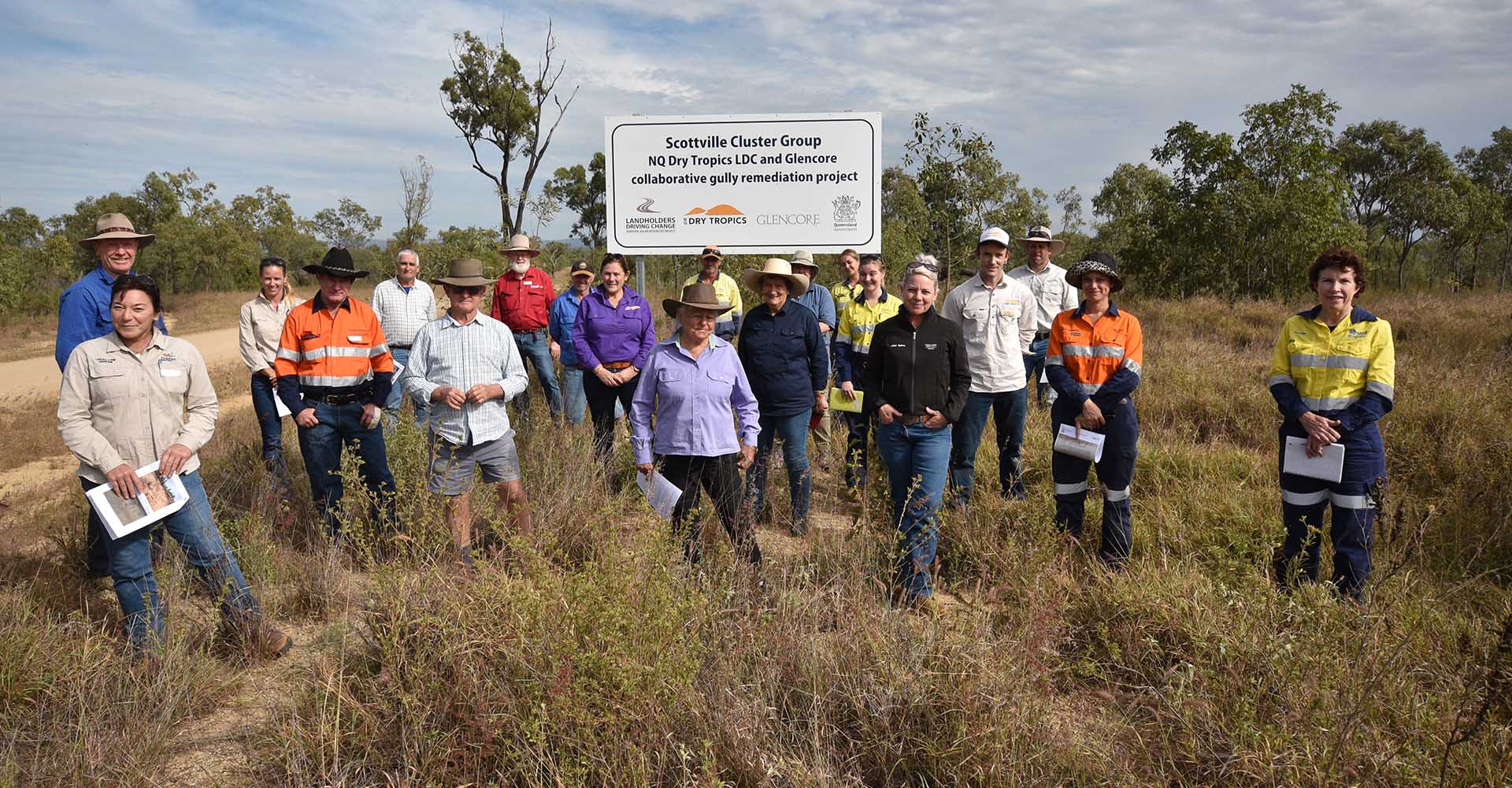
Scottville mob performs a ‘labour of love’
A group of landholders from Scottville, near Collinsville, banded together two years ago to address erosion issues on their properties.
Dubbed the ‘Scottville Mob’, they represent six neighbouring properties, and from the outset, had a clear line of sight to:
- understand the causes of their erosion hotspots, as well as the extent of the gully networks and likely rate of expansion;
- design solutions to repair eroding gullies;
- get on with the job of fixing the problem areas; and
- remove grazing pressure to allow vegetation cover to establish on remediated areas.
Dividends paid in knowledge and skills for everybody involved
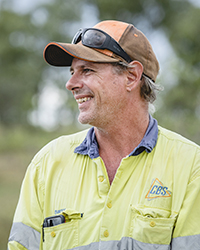
Barry Collett
Grazier Barry Collett said being part of a cluster group had reaped dividends in building knowledge and skills for everybody involved.
“NQ Dry Tropics brought us together in a coordinated way, including experts, to help guide us,” Mr Collett said.
“As a result we’ve learnt a lot about remediating and preventing erosion, and landscape function.
“When we come together there’s always good discussions, because a one size fits all approach doesn’t apply to fixing erosion problems.
“Each property has had its own unique issues and therefore what worked on one place wasn’t going to work on another.
“Now the works have been completed, it’s really good to revisit the sites and see what’s being done and how the works are holding up.
“It’s been a great learning experience. Our discussions are now focused on grazing land management, and how to best improve pasture and soil health.”
A chance to tackle a big problem with help from friends
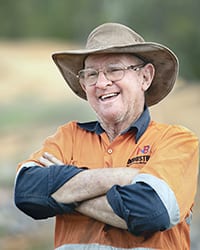
Stanley Fordham
Stanley Fordham, of Emohruo, said being part of a cluster group enabled him and his wife Judy, to address erosion issues and improve ground cover.
“For us, erosion has been a big problem for a long time. We’ve always had the will to fix it but its been cost prohibitive,” Mr Fordham said.
“When NQ Dry Tropics came along with the LDC project it meant we were eligible to access some funds and resources and I’m very thankful for that.
“During wet seasons the water comes tearing down the ridge and runs straight into Pelican Creek taking with it valuable soil.
“If you can block a gully and hold that water back in the country, you’re going to keep water and soil on the paddock, and that’s a whole lot better than seeing it run out into the ocean.
“The works we have done will keep water and soil on the paddock, and that means we can now put more effort into improving pasture and soil health.”
Valuable opportunity to design solutions to problem areas
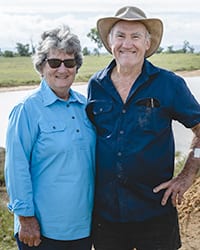
Isabel and Garry Sloane
Isabel Sloan, of Hillview, said she and husband Garry valued the opportunity to be able to help design the solution to the problem areas on their property.
“Many heads are better than one, and my husband and I appreciated the consultative approach by all stakeholders,” Mrs Sloan said.
“As graziers, we run our farms a little bit differently so it was important that what was done on-ground suited our individual land management requirements.
“We were also able to choose the local contractor we wanted to use. It was important to us to support local businesses.
“By doing a lot of the work ourselves meant we reduced labour costs. Physically, it was very hard work, but we learnt so much while doing it, and as a result we’re very proud of our efforts and the results.”
Experts helped the Cluster Group to achieve
Through the LDC’s integrated activity areas of Grazier Support and Landscape Remediation, the Scottville Cluster Group was able to access expert assistance to help identify remediation options and guide implementation.
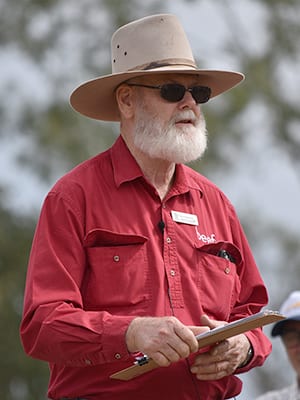
Bob Shepherd
Department of Agriculture and Fisheries (DAF) principal extension officer (grazing land management) Bob Shepherd provided expertise to help the cluster group develop cost-effective designs to remediate gullies and other property erosion features to reduce soil erosion.
Works included surface water diversion banks, installation of rock chutes and gabion baskets, reshaping of erosion areas, and seeding topsoil on reshaped areas.
Glencore provided in-kind support through sharing expertise and knowledge in landscape remediation techniques, and also provided the majority of rock for the rock chutes.
All on-ground works were carried out by local contractors. Landholders provided some in-kind machinery and significant labour.
Glencore representatives with some locals at a recent Scottville Cluster Group Field Day.
Common features
Gully restoration options have a number of features in common:
- Arresting upstream migration of gully heads.
- Stabilising banks, typically by battering and re-shaping.
- Establishing cover, a perennial grass and cover crop.
- Removing grazing pressure, typically by fencing to allow a vegetation cover to establish.
- Diverting upstream flows (at least temporarily) to avoid further degradation.
- Planning for subsurface flows and soils prone to dispersion if they are a risk.

